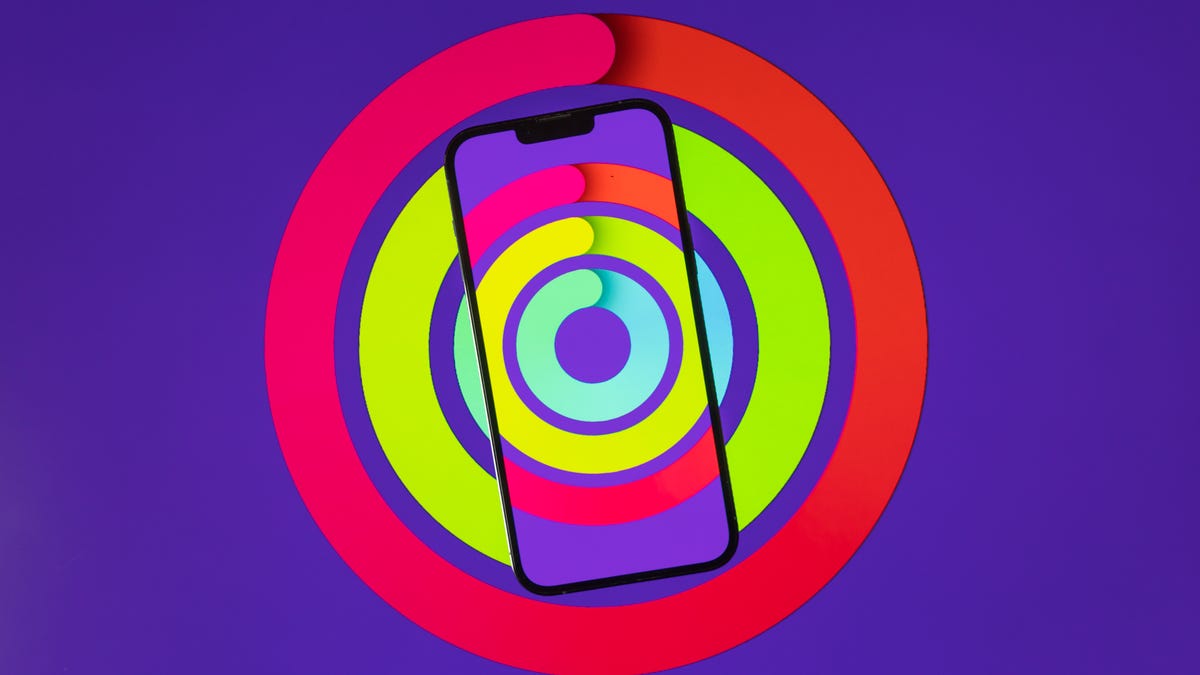I'm an Apple Fitness Plus Addict Without an Apple Watch
Commentary: Apple's platform has transformed my relationship with exercise, but the focus on Watch metrics is out of sync with my fitness goals.

No, I will not close my rings.
As I pointed my skis down the slope on the first run down the mountain, I braced for the familiar gnawing ache to grip my thighs. But even though this was my first time skiing in seven years and the first time I'd hit the slopes since entering my 30s, the soreness that usually accompanies me on a trip to the French Alps never arrived.
The source of my newfound comfort on skis was immediately clear to me. Though I was older and out of practice, I was stronger than I'd ever been in my life. For more than a year, I'd consistently been doing Apple Fitness Strength workouts several times a week, lifting and squatting, lunging and pressing. And it was not only on skis that I was reaping the benefits.
But it would surprise you to learn that even if I'm a devoted Apple Fitness user, I don't use an Apple Watch. That's despite the fact that Apple marketed its Fitness service as an accompaniment to the Apple Watch, and so many of the features are tied together. One of those feature is the ability to "close your rings" when you've hit your goals.
It's for this reason that I avoid using an Apple Watch altogether. I don't want access to all of the metrics because I find they distract me from my real goal, which has been to build a consistent exercise habit that allows me to feel and function the best I can throughout the rest of my life.
To say Apple Fitness Plus has changed my relationship with exercise is an understatement. Not having to go to a gym to work out saves me a tremendous amount of time. Plus, I find the workouts themselves to be motivational and fun. I can mostly credit strength trainers Gregg, Kyle, Sam and Bettina for this. But last month, as I recovered from COVID, I used Apple Fitness pilates workouts to ease back into exercise, and occasionally I mix it up with dance and yoga workouts.
When I evangelize to friends, family and strangers about Apple Fitness, their first question is whether you need an Apple Watch to use it. The answer is complicated.
It's possible to use it on an iPad without an Apple Watch, but to start a workout on Apple TV you need to initiate it from the Watch (something I dearly wish Apple would consider changing).
Shifting my focus away from metrics allows me to concentrate on what matters most to me: consistently showing up.
But it's still workable without the Watch. And missing out on all those metrics meant I could focus on my real goal of consistent exercise.
This is something I've struggled with since I was teenager. For a long time, I felt that if I wasn't punishing myself by pushing to my absolute limit, I was failing at exercise. When I didn't hit whatever arbitrary goal I'd set for myself, I'd feel guilty, then I'd be less inclined to exercise, which would make me feel more guilty, and eventually I'd stop altogether.
All of this was totally unnecessary. I'm not an athlete who needs to train for my job, so the metrics don't really matter. What matters for desk workers like me is that we're consistently moving our bodies in ways that keep us healthy.
When I started Apple Fitness workouts, which are mostly in very achievable 20- and 30-minute sessions, I was determined to break the cycle and instead try to focus on building a habit and listening to my body. And it worked.
Finally, after years of throwing myself into short-term fitness challenges -- a hard-core month of Barry's Bootcamp, training for a half marathon -- and burning out immediately after completing them, I've found an exercise regime that I can keep showing up for no matter how busy I am, and that provides enough variety so I never get bored.
I'm hardly the first woman to have discovered that rather than punishing myself with endless mind-numbing high intensity workouts, I can instead lift some heavy weights a few times a week and feel strong and capable and energized. But now that I've found my groove, I'm reluctant to mess with the formula.
I know if I start to throw metrics into the mix and worry about hitting certain goals, I have the potential to obsess over them. I've been there with calories, and even sleep tracking, becoming increasingly fixated on the numbers in ways that start to interfere with my mental health and personal life.
Instead, I'm happy to measure my "progress" purely by how consistently I show up, and how easily I'm able to slip back into a routine when something like COVID shows up to throw me off course.
In Scotland, where I live, there are endless opportunities for outdoor pursuits to test the impact Apple Fitness has had on me. All throughout the past year, as I hopped my way up the Lost Valley of Glen Coe and kayaked around the bleached sand islets off the western coast, I felt my core, my legs, my shoulders effortlessly take on whatever challenges I threw at them. And that brings more satisfaction than closing some digital rings ever could.

